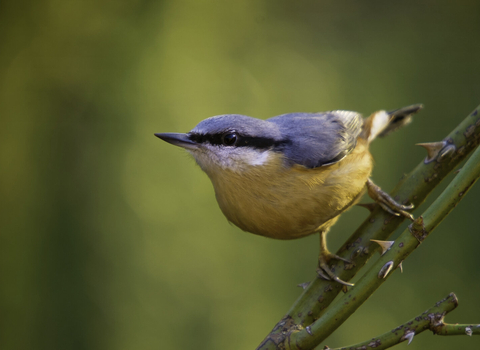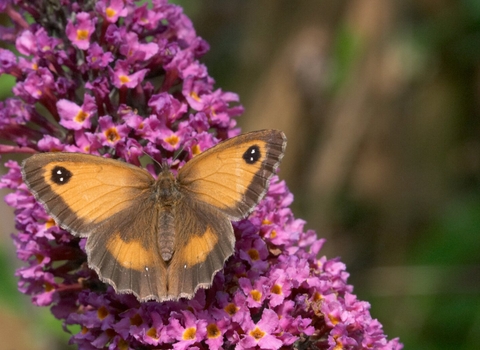
Grace Hunt/WTSWW
Location
Know before you go
Dogs
When to visit
Opening times
Open access reserve.Best time to visit
Spring and SummerAbout the reserve
Pengelli Forest is part of the largest block of ancient Oak woodland in west Wales. The woodland can be broadly divided into two sections. Adjacent to the entrance is Pant-Teg Wood, the steep slopes supporting woodland dominated by Sessile Oak and Birch regrown from clear-felling during 1914-1930.
Dense canopy shade has inhibited the understorey growth of Hazel and Holly. The ground flora is characteristic of acid Sessile Oak woodland with Wavy Hair-grass, Common Cow Wheat and Bilberry, with numerous moss species. Three trees of the native Wild Crab Apple are present and valley bottoms support Alder and Willow.
The main body of Pengelli Forest with its gently undulating topography and many small streams has developed on poorly drained boulder clay soils. The woodland – owned and described in detail in Elizabethan times by the noted Pembrokeshire historian George Owen- was once very important to the local economy as a source of timber, and was grazed by livestock that were confined within a bank and ditch.
The canopy comprises a mixture of Birch, Ash and Alder with a wide range of hybrid Oaks. Over much of the site there is a dense understorey of Bramble, Hazel, Honeysuckle, Hawthorn and Holly. This is the only known location for the Midland Hawthorn in Pemrokeshire and Aspen, Goat Willow, Wild Cherry, Wych Elm and Apple are also to be found.
The varied ground flora includes Wood Millet, Wood Sedge, Moschatel, Wood Anemone, Violets and Golden Saxifrage. Adder’s Tongue Fern, Early Dog-violet and Water Avens also occur.
Among the rich diversity of mammals are Badgers, Polecats, Woodmice and Bank Voles. Dormice, though seldom seen, leave the remains of Hazel nuts with the characteristic teeth marks. The rare Barbastelle bat is one of eight species of bat which roost and forage in the woodland. Frogs and newts breed in the wetter areas while Common Lizard and Slow Worm may also be found.
Interesting invertebrates include the Oil Beetle, Dark and Speckled Bush Crickets, and woodland butterflies including the White Letter and Purple Hairstreaks, and Silver-washed Fritillary.
The range of birds is typical of such a woodland with species including Redstart, Wood Warbler, Buzzard, Chiffchaff, Tawny Owl and Sparrowhawk with Woodcock visiting in winter. These species were augmented in the 1980s by the Pied Flycatcher, which used nestboxes erected by the Trust.



